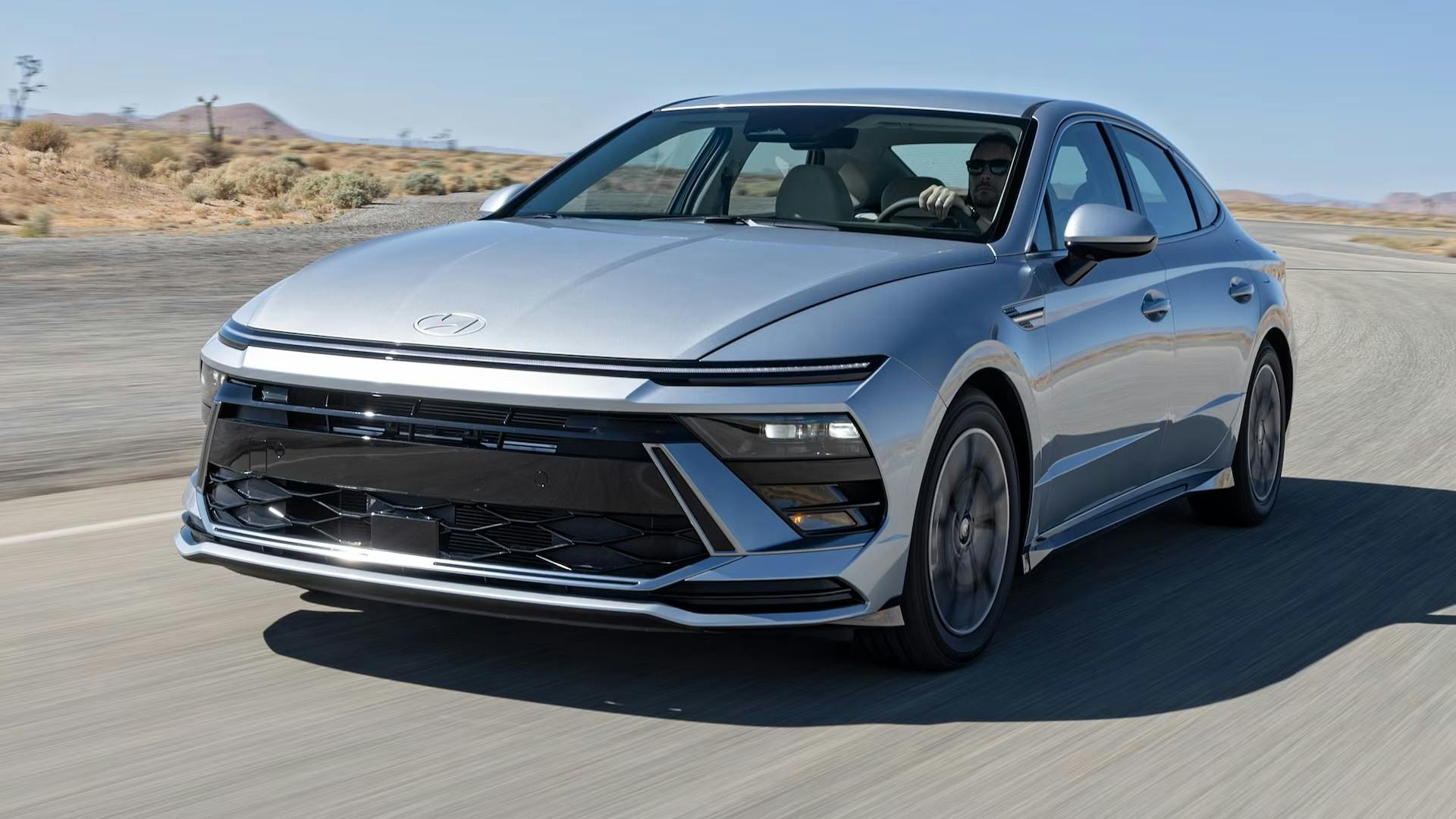
2025 Sonata AWD: All-Wheel Confidence for Any Weather
If you've ever assumed that all-wheel drive (AWD) is reserved for SUVs, the 2025 Hyundai Sonata is here to challenge that notion. With the addition of AWD to its lineup, the Sonata joins a select group of midsize sedans—like the Kia K5, Toyota Camry, Nissan Altima, and Subaru Legacy—that offer enhanced traction without sacrificing the lower stance and handling benefits of a traditional sedan. For drivers who prefer a car to a crossover but need the confidence of four-wheel traction, the Sonata AWD is an intriguing option.
The New Addition to the Sonata Family
Hyundai's decision to add AWD as an option for the Sonata brings added appeal to its already popular midsize sedan. Priced at $1,500 over the standard front-wheel-drive model, AWD is available on the SEL trim, which starts at $28,650. This AWD upgrade is tailored for drivers in regions where wet or snowy conditions make driving more challenging, but who prefer the refined drive of a sedan over the bulk of an SUV.
The 2025 Hyundai Sonata receives significant updates inside and out, continuing to evolve since its current generation debuted in 2020. The changes go beyond just aesthetics, introducing a refreshed driving experience enhanced by Hyundai’s HTRAC AWD system.
Updated Exterior and Interior Design
The 2025 Sonata flaunts an aggressive exterior redesign, easily distinguishing it from previous models. Its bold front-end features a cycloptic LED light bar that stretches across the grille, giving the car a futuristic and sleek look. At the rear, the trendy full-width taillight bar adds another layer of modern style. However, while the front-end design is striking, it might not perfectly align with the curvier body panels that carry over from earlier models.
Inside, the Sonata’s cabin is thoroughly modernized. A single enclosure now houses both the gauge cluster and infotainment display, creating a sleek, unified look. The climate control panel has been updated with more capacitive touch buttons for a more contemporary feel, and the center console has been redesigned for better functionality, including relocating USB ports for easier access. A twist-knob shifter on the steering column—similar to what’s found in the Hyundai Kona and Ioniq 6—replaces the previous push-button design, freeing up space on the console. Additionally, a redesigned steering wheel with a thin, three-spoke layout adds to the car's minimalist appeal.
Powertrain and Performance
The Sonata’s AWD system is paired with a naturally aspirated 2.5-liter inline-4 engine, which produces 191 horsepower and 181 lb-ft of torque. This is the same engine as the front-wheel-drive version, connected to an eight-speed automatic transmission. While the AWD system gives drivers added traction in poor conditions, the engine itself remains adequate but not overly powerful. It’s responsive and gets the job done, but you might wish for a bit more oomph during highway overtakes or when climbing steep inclines.
On the track, the 2025 Sonata AWD offers competitive if not class-leading performance. It accelerates from 0 to 60 mph in 7.9 seconds and completes the quarter mile in 16.0 seconds at 87.2 mph—figures that are respectable for a midsize sedan but not remarkable. Braking from 60 mph takes just 118 feet, a solid result that beats even some of its sportier rivals like the Sonata N Line.
Handling on the AWD model is stable but not particularly exciting. On the skidpad, it managed an average of 0.82 g, which matches the grip of the Sonata Hybrid and trails slightly behind the more performance-oriented N Line. Overall, the Sonata AWD delivers smooth, balanced driving dynamics but falls short of living up to its sporty new styling.
AWD System in Action
Hyundai’s HTRAC AWD system adds versatility to the Sonata, offering improved performance in adverse weather conditions. Although our test took place during Southern California’s dry summer days, the system’s AWD information screen clearly displayed how power was being distributed between the front and rear wheels. Under moderate acceleration, most of the power stays with the front wheels, but as you push harder, the system sends more power to the rear to maintain traction and stability. This provides a reassuring sense of control during acceleration from a stop or when cornering.
One of the standout features of the Sonata AWD is its Snow mode. In this mode, the AWD system adjusts wheel slip control, throttle response, and transmission shift points to optimize performance in slippery conditions like snow or ice. Hyundai’s approach to AWD is distinct from rivals like the Toyota Camry AWD, which uses an electric motor on the rear axle for added traction at takeoff, or the Subaru Legacy, which offers a full-time AWD system.
Ride and Comfort
While the Sonata AWD doesn’t deliver the sportiest drive, it excels in comfort and ease of use. The suspension strikes a good balance between firm control and ride comfort, absorbing road imperfections without feeling harsh. The AWD system contributes to a sense of stability, especially when driving on back roads or during more spirited drives.
The cabin is quiet and spacious, with plenty of room for both front and rear passengers. The front seats are plush and supportive, perfect for long drives. Hyundai's latest infotainment system also receives an upgrade, featuring the new ccNC software, which is quicker and more intuitive than previous iterations. It integrates seamlessly with the 12.3-inch touchscreen, and the new user interface is easy to navigate. Capacitive touch controls for climate settings and other functions add a high-tech touch, though they can be less intuitive than physical buttons.
Fuel Economy and Driver Assistance
In terms of fuel economy, the 2025 Sonata AWD matches the front-wheel-drive model in city driving with 25 mpg but sees a slight drop on the highway to 34 mpg (versus 36 mpg for FWD). While AWD typically reduces fuel efficiency, the Sonata’s AWD system is fairly efficient for the added performance and control it provides.
Hyundai’s driver assistance features continue to impress. The adaptive cruise control works smoothly, making highway driving less stressful. Lane keep assist is effective, though it could be a bit more assertive in keeping the car centered in its lane. Overall, these systems add to the Sonata’s appeal as a comfortable, tech-savvy commuter.
Is the AWD Worth It?
Adding AWD to the 2025 Hyundai Sonata enhances the car’s capability and appeal, particularly for drivers who deal with challenging weather conditions. While it won’t turn the Sonata into a sports sedan, the AWD system adds confidence and surefootedness without sacrificing the comfort and ease of a traditional midsize sedan.
At $1,500 above the base price of the SEL trim, the AWD upgrade is an excellent value for those who want a sedan that can handle rain, snow, or uneven terrain. With its stylish new design, comfortable interior, and balanced driving dynamics, the 2025 Sonata AWD proves that all-wheel drive isn’t just for SUVs anymore—it’s an upgrade that can make your daily drive both more enjoyable and more secure.








